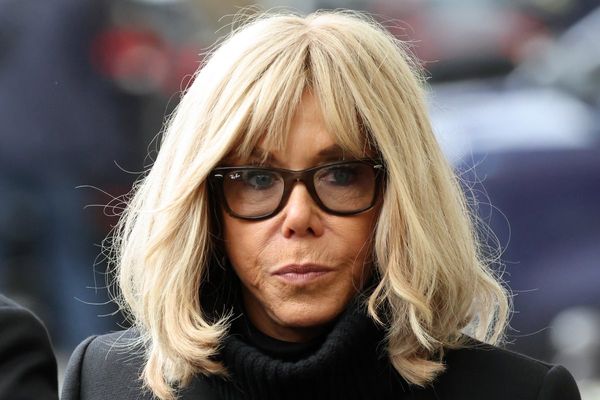
Almost everyone agrees that Australia needs more housing, and nowhere more so than in Sydney, which has struggled to escape its reputation as one of the most expensive cities in the world to find somewhere to live.
The New South Wales planning minister, Paul Scully, says the problem of housing supply has been ignored for far too long.
“For years we have simply not been building enough homes in NSW,” he says. “As a result, Sydney has become the second-least affordable city in the world and NSW is losing twice as many young people as it is gaining.
“Does anyone think we can keep doing what we have been doing and expect a different result?”
But plans from state and local government to urgently increase the number of properties through greater density have come up against determined opposition.
On Friday morning the land and environment court set 27 October as the date for a case brought by 89-year-old Judith Pearson to be heard. Pearson, who lives in Mosman on Sydney’s north shore, is believed to be the first individual to mount a legal challenge to the state government’s plans.
Sign up: AU Breaking News email
She has framed her objections as a fight to retain the character of her suburb and keep it open to a diverse range of income groups.
“It became not about me, but about us … who live here because of the history, the heritage and the importance of having the right environment that we all want to live in,” she told a packed meeting of Mosman council in early August.
“I am not against development, but … early indications are that the planned developments for Mosman will only be affordable to the very privileged.”
Variations of the same argument are raging in different parts of the city, but it’s clear there is no straightforward path to satisfying the wishes of residents – and those who wish they could afford to be residents.
The forest of acronyms
Anyone engaged in the density question has to come to terms with a forest of initials and acronyms.
Two of the most dramatic tools to address the problem in NSW are the state government’s transport-oriented development (Tod) and low to mid-rise housing (LMR) policies.
Their broad thrust is to rezone land with the aim of fast-tracking 342,000 dwellings close to stations and town centres, transforming suburbs into mini cities, particularly along the metro line.
Rezoned “accelerated” Tod precincts in Hornsby, Macquarie Park, Kellyville, Bella Vista, Bankstown, Crows Nest, Homebush and Bays West allow six-storey developments within 1,200 metres of eight transport hubs.
An additional 37 centres within Sydney, Newcastle, Illawarra and the Central Coast have been earmarked for six-storey developments within 400 metres of stations.
LMRs are designed to boost the diversity of housing stock and will create a tiered effect around stations and town centres with mid-rises within the first 400 metres of a hub, giving way to low rises such as townhouses up to 800 metres from hubs. Mosman is one of the areas that falls into this category.
Larger developments will be approved by the state government, while council panels will approve other development applications submitted under Tods and LMRs.
But the Tods and LMRs are blunt instruments, delivering a top-down mandate to culturally, socially, geographically and demographically different areas while initially calling for just 2% of the new homes to be affordable.
The response to the Tod policy – accidentally announced in December 2023 – and to last year’s LMRs has been huge. The public exhibition of LMRs alone resulted in 8,000 submissions. Many feared the plans would drive the construction of bland blocks in locales variously known for their leafy streets, close-knit communities, creative edge and single-home lots.
If nothing else, the policies have triggered action on densification at the local level. According to the Department of Planning, Housing and Infrastructure, 11 of 13 Tod-affected councils have deferred Tod start dates and 12 have drawn up their own, more nuanced alternatives (Newcastle is the only exception).
But far from resolving anxieties, the counter-proposals appear to have divided communities further.
‘A terrible situation’
Heritage is one sticking point. Tods and LMRs do not override listed heritage items, but they do apply in heritage conservation areas. David Burdon, the conservation director of the National Trust of Australia, told a parliamentary inquiry into Tods that heritage conservation in NSW was increasingly seen as “optional”.
Others take aim at the hard edge where high-rise meets land that has not been upzoned.
Under the original Tod maps issued by the Minns government in 2023, up to six storeys would have been allowed on the West Lindfield street where Paul Grimble has lived for 30 years.
Ku-ring-gai’s preferred option, devised after consultation with the community, is very different. It wants to go high around Gordon and Lindfield stations – up to 28 storeys with heights of up to 93 metres – but to cut back on development in heritage areas and limit heights in others.
For Grimble, who lives 350 metres west of Lindfield station in a single-storey house, the revised plan is a disaster.
The land where his house and those of his neighbours sit will be limited to developments of three storeys and six to nine units.
Grimble says this will make his house an unattractive proposition for developers compared with what it would have been worth under the state government’s plan – if he sold he would not be able to buy a similar house in the area.
“So, nobody in these areas is going to be able to afford to sell. Nothing will happen and the council’s promised target of 24,500 apartments will come to nothing,” Grimble says.
“The council appears to have thrown out their own planning rulebook and put us all in a terrible situation.”
Worse still, he’s about to get a 10-storey building on his back boundary, which was approved as a state significant development a few years back.
“These developments collide with their neighbours over a fence with a height difference of 10 storeys to one. The desired ‘harmony’ [of built form] is severely disrupted not just for one neighbour but on a whole side of the street,” he says.
Ku-ring-gai councillor Indu Baluchandran says: “We recognise it’s not perfect … but it’s certainly better than the original Tod in terms of preserving neighbourhood character that Ku-ring-gai feels is precious to this community.”
Not everyone in the area is unhappy. For Gordon lawyer Sarah Hart, development is overdue.
“If you’re near good public transport, you should expect to be around lots of people,” she says. “I had always expected that there would be increasing density around stations.
“The more people here the better, because I would like my local chemist to have a reason to stay open on Sundays and I’d like local restaurants to stay open beyond 8pm. We didn’t come here because we wanted camellias.”
The NSW Department of Planning is due to respond to the plan in September, and the council’s land and environment court challenge to the validity of the Tod policy is due to be heard in November.
‘That’s not planning’
Elsewhere, fears over quality and the lack of affordability have stalled the push towards new development.
Among the Tod critics is Shelter NSW. In one of the 347 submissions on Hornsby’s accelerated Tod, the housing charity said it could not support the Tod because it did not meet the 15% affordable housing rate that was part of the state’s “density deal” sold to the broader community.
That sentiment is perhaps most keenly felt in the city’s inner west, an area that has leaped from affordable to gentrified in recent years.
Eddie Ma, an architect who designs affordable and specialist housing, can see Dulwich Hill station from his apartment block. On one side of the station are six-storey apartment blocks, on the other, single-dwelling houses in a heritage conservation area he would like to see preserved.
“The Tod didn’t consider local context,” he says. “It’s a two-line policy that just says: at these stations, you can build up. That’s not planning.”
In response, Inner West council proposed its Our Fairer Future plan – a block-by-block strategy that goes well beyond the Tod by increasing the target number of dwellings for the area from 7,800 over five years to 31,000 in 15 years.
Some buildings may reach 22 storeys, but generally are likely to sit between six and 11 storeys – and about 70% of developments will be concentrated in three suburbs.
“That is never going to deliver a good outcome,” says Ma, who is a member of the local Better Futures Coalition. He claims the 1,150-page plan was poorly communicated and is unfair.
“You have one tiny area living with the positives and the negatives of densification and the rest of the LGA could fall asleep, wake up 15 years later and nothing would have changed.”
He believes the plan’s amalgamation incentives – allowing developers to build up to 17 storeys depending on the size of the site and its active transport provisions – favour large-scale developers.
He is disheartened by its 2% affordable homes provision, rising to 5% in five years. The council’s own affordable housing policy calls for 15% of new builds to be affordable.
The inner west mayor, Darcy Byrne, is adamant the plan is fairer and designed more carefully than the Tod, preserving all heritage conservation areas while attempting to become the state’s leader on affordable housing.
The inner west needed a finer-grained approach than the state’s “completely unsubtle, unsophisticated way”, he says, not least because it is already densely populated by Australian standards, with diverse ownership and small, high-value lot sizes that made amalgamation incentives necessary. Future developments, including along Parramatta Road, will balance out initial pushes for density elsewhere in the LGA, he says.
“One of the reasons that Sydney has one of the least affordable housing markets in the world and that young people are being forced out of the inner west en masse is because of this debate constantly being replayed, in which the voices of young people are eliminated,” he says.
“What I’m noticing in the community is the proportion of people, particularly younger people and essential workers, who are being priced out who are saying, ‘No, we have to address this crisis. Let’s find a way to do it’.’”
Australian cities lag far behind
Feasibility studies paint a varied picture of how many homes the policies will actually deliver. According to the Fairer Future plan, Tods and LMRs in the inner west will result in just 3,200 homes by 2041, while the council’s alternative will create 5,900 homes. Ma says the low numbers are another example of the inadequacy of the policies.
Stuart Ayres, the chief executive of the Urban Development Institute of Australia NSW, says the policies have so far not seen the uptake needed to achieve housing objectives – with only 3,500 possible new dwellings across Tod and LMR sites being attributed to genuinely new development applications after one year.
Take-up may be limited by yet another factor. Nicole Gurran, an urban planning professor at the University of Sydney, suggests it is better to rezone land precinct by precinct, responding to – rather than pre-empting – the market.
“That way, you’re not artificially raising land value ahead of what’s feasible to be developed,” she says.
Ehsan Noroozinejad Farsangi, a senior researcher at the Urban Transformations Research Centre at Western Sydney University, says Australian cities are far behind others, including Vancouver and Hong Kong, in implementing policies similar to Tods and LMRs.
He’s seen them work, but in NSW, he says, “the problem is that, at the moment, the government is doing the Tod and the LMR in a top-down approach. It should be bottom-up”.
“Most of the politicians and government bodies are mainly focusing on the quantity rather than quality and community,” he says.
“Even if that number of houses would be produced in the next five years, the question is: what quality will they be? The final outcome should be something livable and should be something high quality. Otherwise it’s not working.”
Scully is determined to persevere in trying to bring the public around to the reforms.
“Change can be difficult,” he says. “While some opposition is expected, I am growing tired of this approach to housing where some people think that the best thing they can do is look for new and creative ways to say no to housing instead of embracing new and creative ways for their suburb to help tackle our housing challenge in a meaningful way.”







